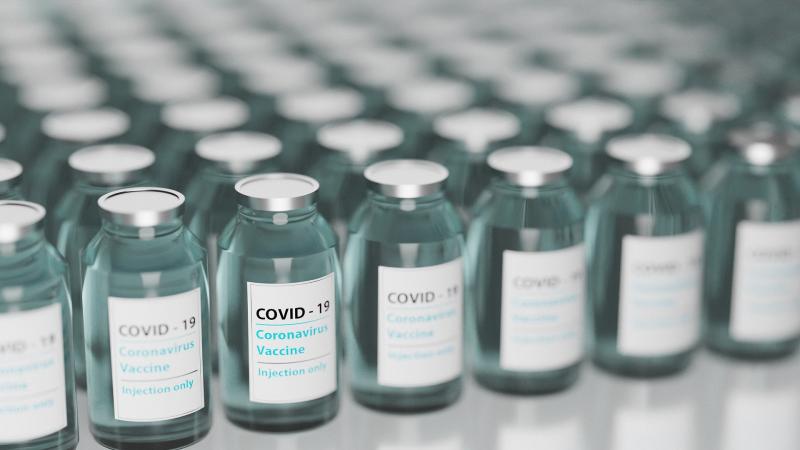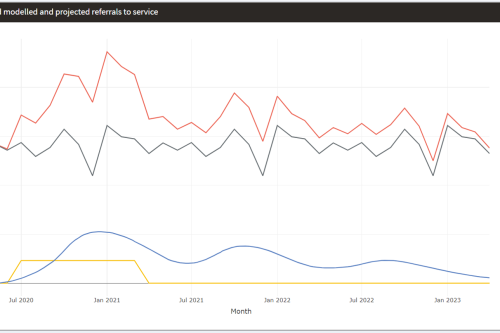The UK is running its largest ever vaccination programme. The stakes are enormous. Ending lockdown, reopening schools and large parts of the economy, allowing social contact: so much depends on the NHS’ ability to deliver.
The stakes are enormous, but so too is the logistical challenge. Tens of millions of people will be offered the vaccine in the coming weeks and months. Tiny improvements in a process of this scale will lead to massive gains. Reducing queuing; easing the flow of (socially distanced) people; ensuring a good experience for vulnerable people; making best use of available staff time and facilities to maximum effect. These are gains worth pursuing.
So local clinics have important decisions to make. They must configure themselves to maximise the number of vaccinations delivered with the resources available to them.
This can be done in practice – through trial, error, experiment and learning. But it can also be done in theory: using modelling to experiment with different configurations and seeing where bottlenecks and problems are likely to result. And using modelling is faster and cheaper way of spotting problems than waiting for them to occur in practice.
From local intelligence to national application: working with Wolverhampton
The Strategy Unit wanted to make a contribution to these efforts. So we were delighted to be able to work with the Wolverhampton Prevention and Population Health Unit team to aid in their advice on planning vaccine centres in Wolverhampton.
This team wanted to model the best ways of planning the use of carpark capacity, managing queue lengths for socially distanced queuing, flows of patients between stages in the process, and – critically - maximise the number of people who could receive the vaccine on a given day, whilst minimising the queuing time of vulnerable patients.
The team at Wolverhampton have been participating in a development programme led by The Strategy Unit and funded by the Health Foundation to use discrete event simulation in a primary care setting1.
In the light of the pandemic the Wolverhampton team put their new skills to work. Working with us, they rapidly developed a local model, which has been used to guide vaccine centre set up.
Seeing a broader need, the Strategy Unit has developed this local model into one with more general applicability. Vaccine clinics across the country could benefit from its use.
There is no pretence on our part that this is ‘the final word’ or even the most refined model it could possibly be. We have got the ball rolling. Our opensource model is the start of a conversation for those who want to look vaccine centre capacity and patient throughput for local areas. It can now be taken on and developed by analysts and people planning and running clinics.
Accessing and using the model
The model is free to use. To do this, you can download the model instructions, the model configuration file and excel results template here.
To run the model you will also need to download and install JaamSim – a free open-source simulation software (https://jaamsim.com/).
You can then customise the different parameters of the model - e.g. car park capacity, staffing, assumed flow - to your local situation and run the model to see what might happen in practice, and how your clinic set up could be optimised.
The output file generated can then be summarised using the excel template provided. Full instructions are included in the excel file on running the model and the configuration file for the model.
This model should be seen as a starting place. It may be updated and customised to use different parameters. If better data becomes available on timings the distribution types used could be changed or to show the impact of having separate queues, for example. It could be adapted to more closely look at staffing requirements, to include time interval results or other local scenarios.
Working together to improving the model
We are proud of the work so far. We were happy to support the team in Wolverhampton and we can see how this model could be useful to others across the country (and maybe beyond).
But it is not the finished article. Releasing the model now, free and opensource, gives us a chance to improve and refine it. We will do this by drawing on the collective intelligence of the modelling community – working alongside those running vaccine clinics.
So we welcome discussion and ideas on developing this model and would be interested to hear if others find it useful.
If you are a github user and you would like to suggest changes or adapt the model we have set up a repository here: https://github.com/The-Strategy-Unit/Vaccination-Centre-DES
Otherwise, please get in touch with us directly by emailing Stacey.Croft@nhs.net or Anastasiia.Zharinova@nhs.net.
1The Strategy Unit is leading a development programme designed to address some of the real world problems facing general practice and Primary Care Networks while at the same time building analytical capacity. https://www.strategyunitwm.nhs.uk/news/strategy-unit-have-been-awarded-funding-health-foundation-improve-analytical-capability-health. Feel free to take a look at our NHS Futures workspace: https://future.nhs.uk/connect.ti/GPsal/grouphome . This project is part of the Health Foundation’s Advancing Applied Analytics programme. The Health Foundation is an independent charity committed to bringing about better health and health care for people in the UK. Further development of the generic model was funded by NHS Midlands and Lancashire CSU.


